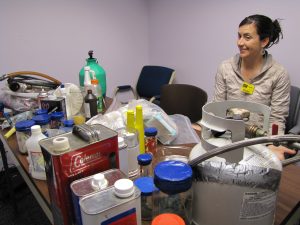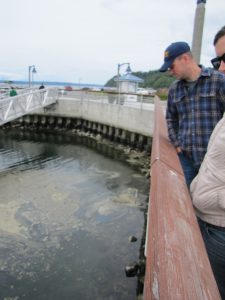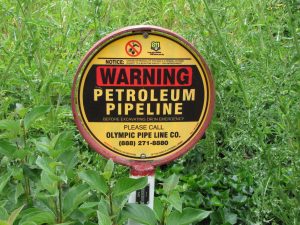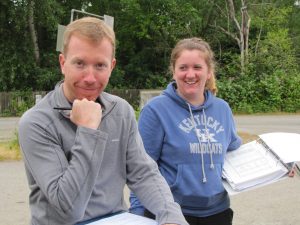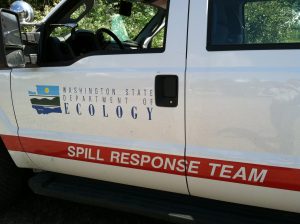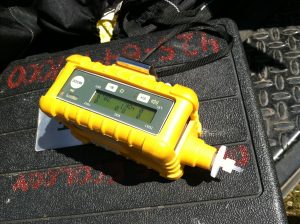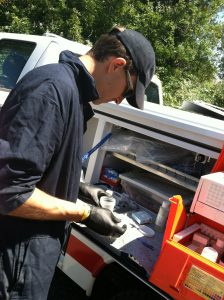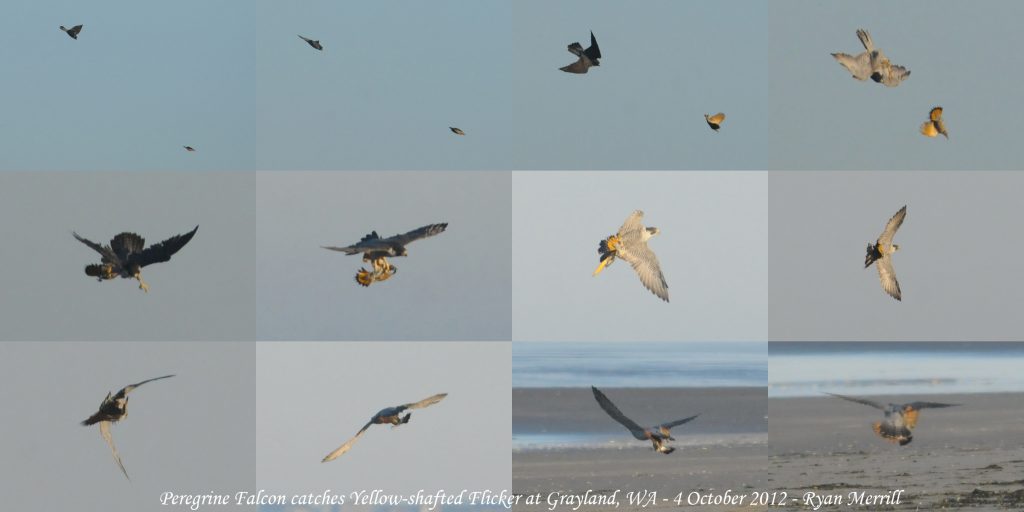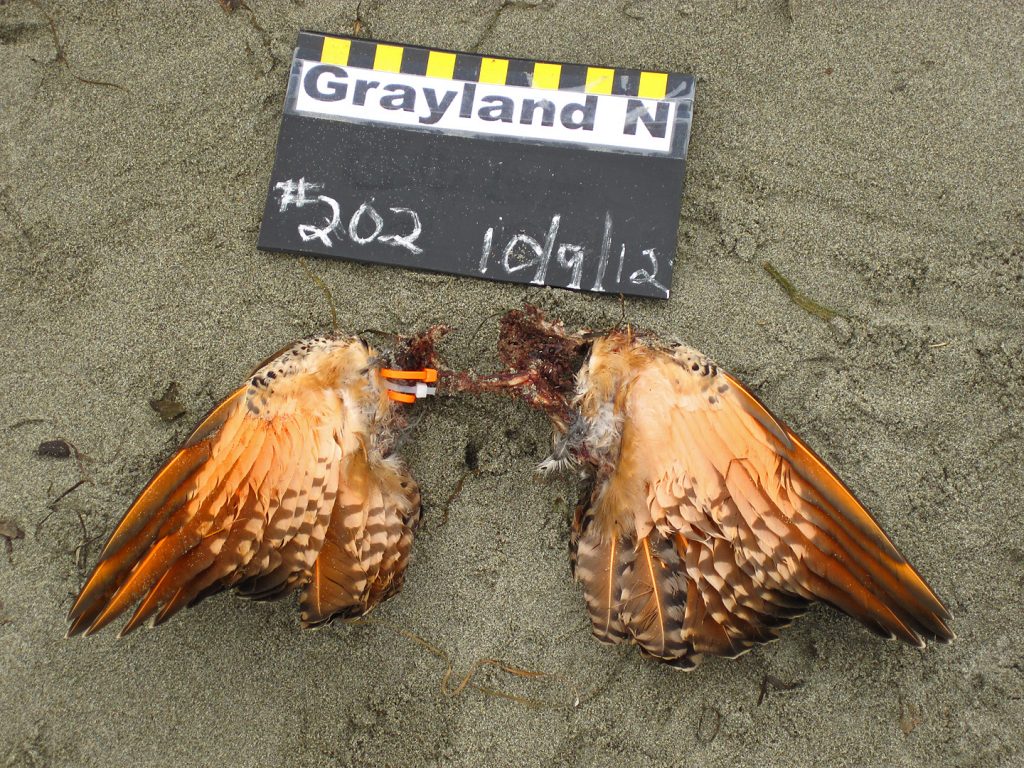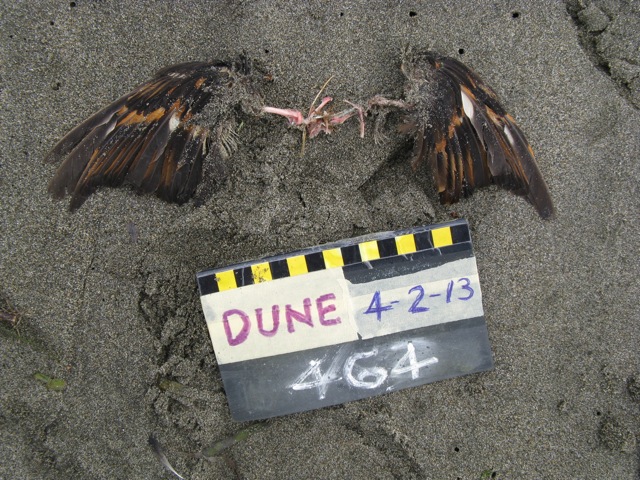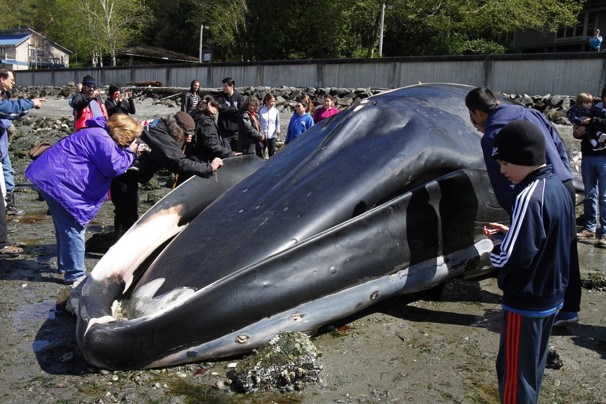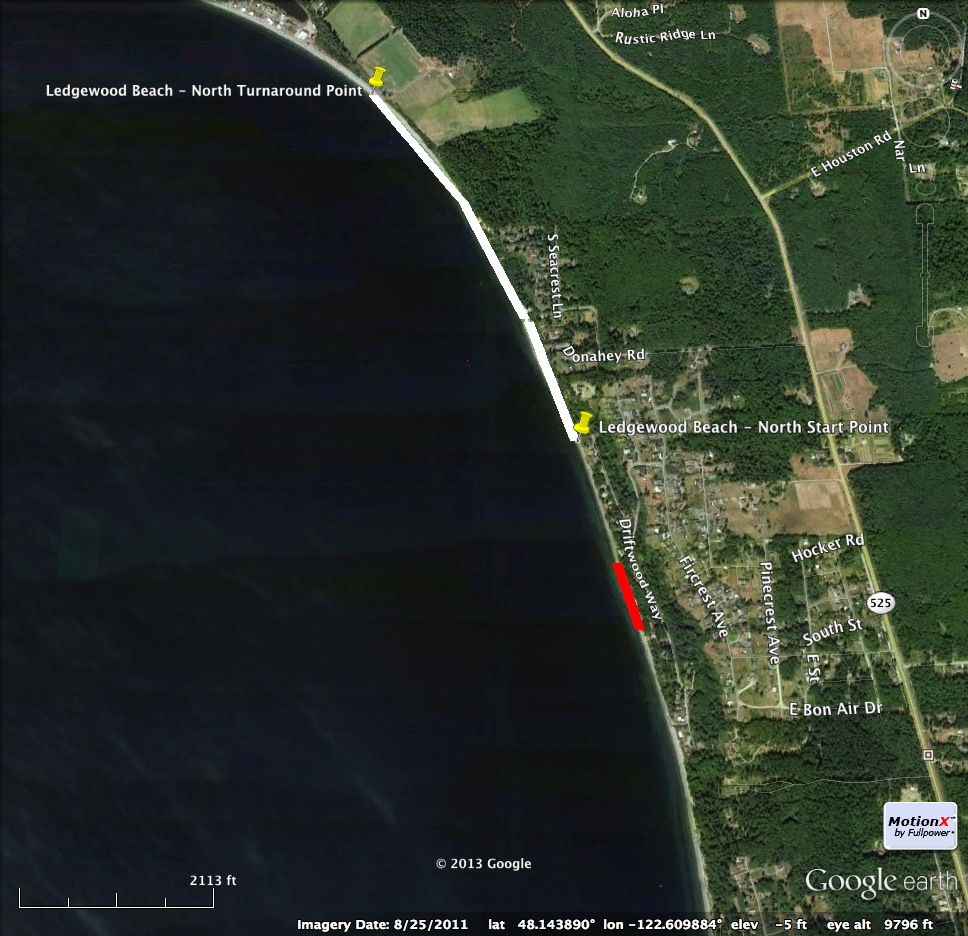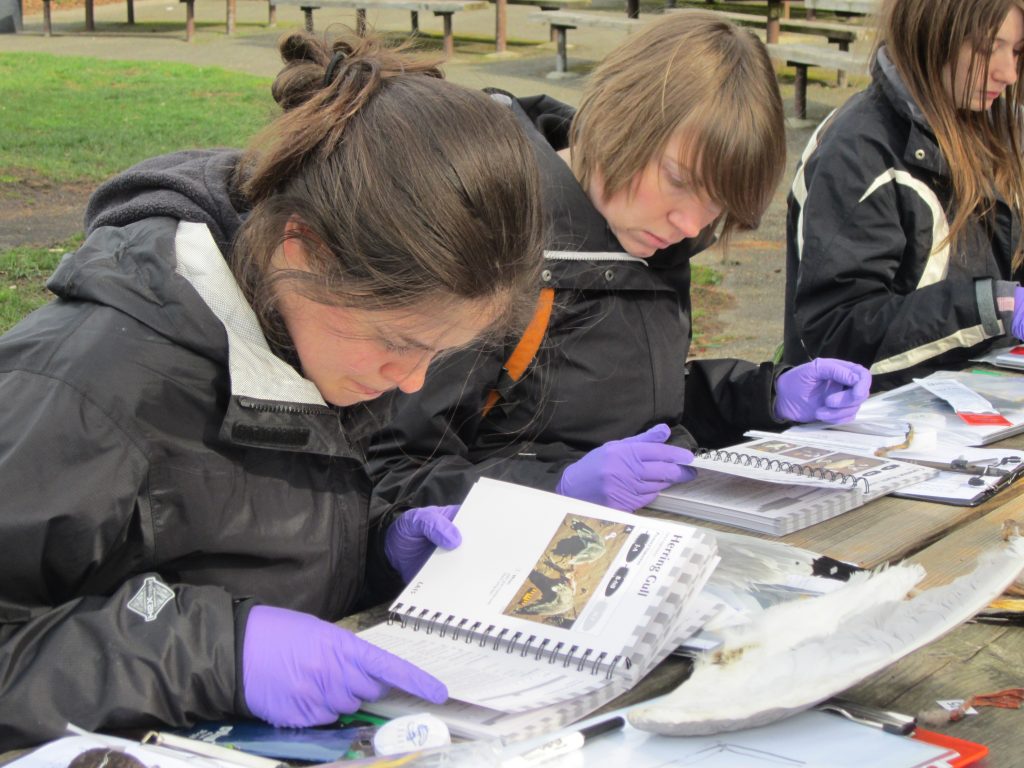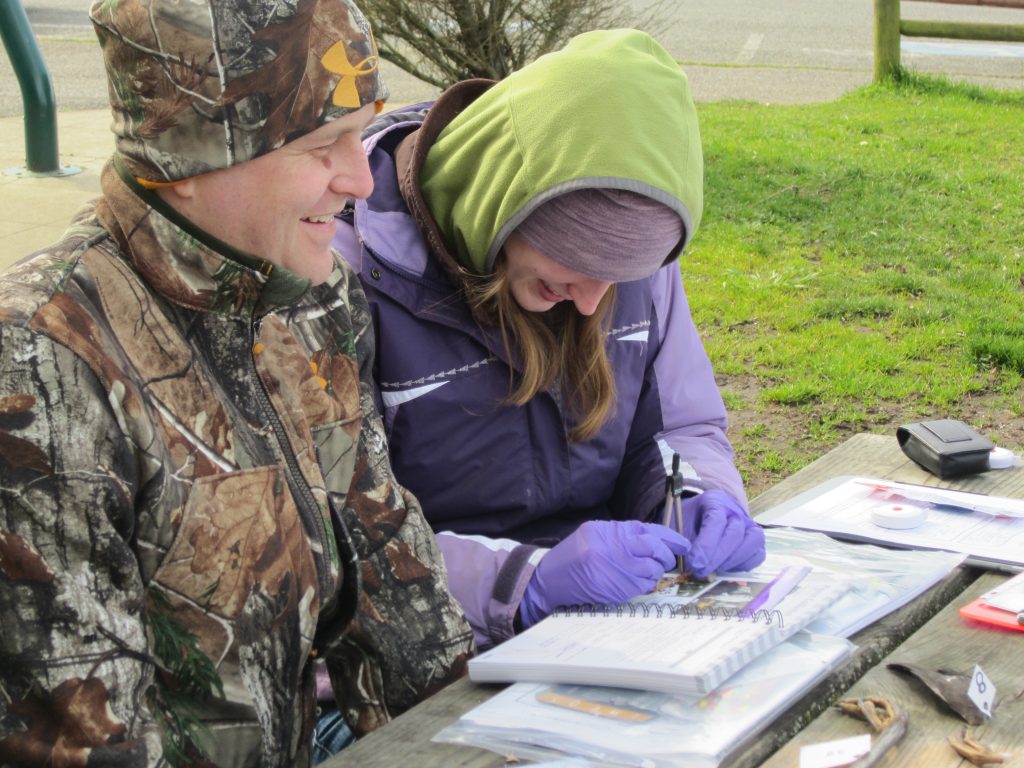We have been seeing lots of interesting things being found out on the COASST beaches. Here are a few of the many photos that have been sent in recently:
The tiniest of tubenoses, this is a Leach’s Storm-Petrel found in North Oregon. All dark upperwing and a small wing chord of less than 18cm puts us in the “tiny” category of the West Coast guide, and a similar spot in the Alaska guide, one shared with many of the small Alcids (e.g., Marbled Murrelet, Cassin’s Auklet). Underwing linings are not white (you’ll have to trust us on this point) so we’re left with Storm-Petrels. Of those, only the Leach’s has a white rump and dark brown (vs. light gray) plumage.
A Large Immature Gull entangled in blue filament (see left leg) found in the Puget Sound. Entangled birds make up about 0.5% of all birds found during COASST surveys in any year. Look carefully at that bill – dark and hooked, but no tube or separate bill plates, so it’s not a shearwater or a jaeger.
There’s only a few species with white in the upperwing and the secondary feathers – Ivory Gull, Glaucous Gull, Trumpeter Swan, Tundra Swan or Snow Goose. Dark primary feathers tell us this is a Snow Goose-light morph, found in the Chukchi Sea (it’s finally melting up there!)
A rubber cat found on the South Coast of Washington – perhaps used as an under-pet-bowl placemat?
Finally, a glass ampoule (sealed vial) found on the South Coast of Washington. Modern ampoules are mostly used to contain injectable pharmaceuticals. The best way to dispose of an item like this and other medications is through a local pharmacy, or National Prescription Drug Take Back Day, or via the FDA’s suggested method.
You never know what you may find out on those beaches!






